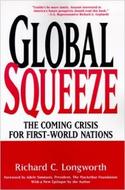Increasingly American politics are driven by generational change. The election of Donald Trump was not just a triumph of whiter, heartland America. It also confirmed the still considerable voting power of the older generation. Yet over time, as those of us who have lived long enough well know, generations decline, and die off, and new ones ascend. read more »
Demographics
The Screwed Generation Turns Socialist
Increasingly American politics are driven by generational change. The election of Donald Trump was not just a triumph of whiter, heartland America. It also confirmed the still considerable voting power of the older generation. Yet over time, as those of us who have lived long enough well know, generations decline, and die off, and new ones ascend. read more »
- Login to post comments
Vancouverizing Seattle?
A recent Wall Street Journal article (“For Chinese buyers, Seattle is the new Vancouver”) reported that Seattle was replacing Vancouver as the most popular destination for Chinese buyers in North America. For years, there has been considerable concern about foreign investment in the Vancouver housing market, especially Chinese investment. read more »
- Login to post comments
Trump Country: Where the Immigrants Aren't
Trump did best in the states with the lowest percentages of foreign-born residents.
“I love the poorly-educated”, gushed Donald Trump after winning the Nevada primary in February. But in the end, what happened in the primary, stayed in the primary. Come November, Trump lost the state to Hillary Clinton, a turn that is explained by the fact that there is a higher percentage of foreign-born residents in Nevada than in any state won by Trump, save Florida. read more »
How Richard Longworth Predicted 20 Years Ago That Globalization Would Cause a Social Crisis
Global Squeeze: The Coming Crisis for First-World Nations
Richard C. Longworth
McGraw-Hill 1998
Whenever we see the reality of momentous shifts in society, it’s always good to go back and take a look at the people who saw it coming far away. Generally speaking, there were usually people who understood what was happening in advance. For example, Daniel Bell wrote his book The Coming of Post-Industrial Society in 1976. There were probably even other earlier books touting the same theme. read more »
- Login to post comments
The 2016 Census of Canada: All About the Prairies
Statistics Canada has just announced population counts from the 2016 census and the narrative is all about the Prairie Provinces. Alberta, Saskatchewan and Manitoba (yes, Manitoba) were the three fastest growing provinces. Metropolitan area growth was dominated by the Prairies, along with metropolitan areas outside the largest in Ontario and British Columbia. read more »
- Login to post comments
What the U.S. Thinks About Immigration - and Why it Should Matter When We Attempt Reform
Americans agree that the country’s policies on handling immigration have long needed reform. However, what kinds of reform and the impact immigration itself has on the United States are matters of great controversy. For both former Presidents Barack Obama and George W. Bush, promising efforts at comprehensive immigration reform were blocked by the unrelenting opposition. read more »
- Login to post comments
The High Cost of a Home Is Turning American Millennials Into the New Serfs
American greatness was long premised on the common assumption that each generation would do better than the previous one. That is being undermined for the emerging millennial generation. read more »
- Login to post comments
Death Spiral Demographics: The Countries Shrinking The Fastest
For most of recent history, the world has worried about the curse of overpopulation. But in many countries, the problem may soon be too few people, and of those, too many old ones. In 1995 only one country, Italy, had more people over 65 than under 15; today there are 30 and by 2020 that number will hit 35. Demographers estimate that global population growth will end this century. read more »
- Login to post comments
The Immigration Dilemma
In often needlessly harsh ways, President Donald Trump is forcing Americans to face issues that have been festering for decades, but effectively swept under the rug by the ruling party duopoly. Nowhere is this more evident than with immigration, an issue that helped to spark Trump’s quixotic, but ultimately successful, campaign.
Many Americans are clearly upset about an estimated 11 million undocumented immigrants, and many also fear the arrival of more refugees from Islamic countries. Perhaps no issue identified by Trump has been more divisive. read more »
- Login to post comments





















